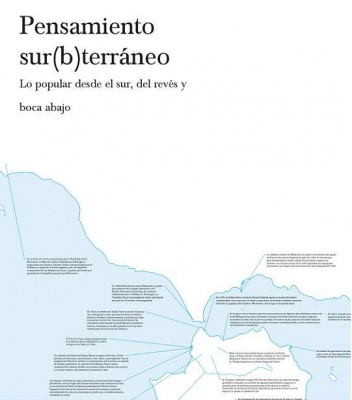Descripción de la Exposición
For Aichi Triennale 2016, the third edition of the Triennale, the artistic director is Chihiro Minato, who has lived in Latin America and is currently partially based in France. In addition, among the invited curators are Brazil-based Daniela Castro and Turkey-based Zeynep Öz. As a result, there are participating artists from more different countries and regions, and non-Japanese artists make up a higher percentage of the total. For Japanese artists, as well, the works presented reflect artistic activities unfolding everywhere from Hokkaido to Okinawa, and the Triennale as a whole showcases the tremendous creativity of artists throughout Japan and the world.
Aichi Triennale 2016 is expanding its framework, aiming to encourage reinterpretation of the very definition of art. In the field of design, D & Department Project is presenting, as their work of art for the Triennale, the guidebooks they produce in various regions using unique methods to unearth and investigate these regions’ distinctive appeal. Other groups and individuals that pursue creative activities from highly original vantage points, such as the Harvard University Sensory Ethnography Lab (cultural anthropology) and Ryoko Sekiguchi (literature), will be featured as well. Participants from the performing arts include Israel Galvan, recognized as a flamenco revolutionary, and Ryoko Aoki, who stages performances that combine Noh theater and contemporary music. Un Yamada has produced a work of contemporary dance based on the blossom festival, a ritual that has been carried out for centuries in the Okumikawa region of Aichi Prefecture.
Among the artists featured will be Kitakyushu Biennial World Tour, a widely internationally active group that takes as their creative starting point not the ideas of individuals but the collective ideas of multiple members, and Ruangrupa (from Indonesia), a collective that exerts a major impact on the local community through the arts, including by operating art spaces and community radio stations. Also, for a limited time, the Luminarium (meaning “house of the moon”), a giant dome-shaped air sculpture designed by the UK-based Architects of Air, will be installed in Okazaki Park. Viewers will be able to enter the sculpture and directly experience a fantastically colorful world permeated with light.
Cultural anthropology is a discipline entailing study of the practices and languages of peoples around the world. For this edition of the Triennale, in selecting artists and works for exhibition, the organizers focused on both the unique forms and the universal commonalities of various cultures, the same themes with which cultural anthropology is engaged. In addition, at this arts festival we address humanity’s relationship to nature, including the animals with which we have always coexisted on the planet and elements like soil that existed on the earth long before our emergence, as well as presenting human art from the prehistoric era such as cave paintings.
The international exhibition, in addition to presenting works by participating artists, will feature a small side-program series called Column Projects, which will feature varied programs such as exhibitions, lectures, and workshops. The word “column” refers both to the stone elements of classical Greek and Roman architecture that, arrayed in series, support roofs while producing rhythm in the spaces they occupy, and to the supplementary pieces in newspapers that relate episodes and relay opinions, which are secondary to the news yet form an indispensable part of the paper’s layout. In the context of the Triennale, the Column Projects help support the arts festival’s theme and concept in the manner of architectural columns, while also serving to supplement the connections between participating artists and their works like newspaper columns.
Aichi Triennale 2016 has the theme of “Homo Faber”*, and aims to shed light on the practice of making things in which humankind has engaged since prehistory. Featured in the Triennale is Locus Faber Tsukulocca**, a project that seeks to expand the possibilities of skilled manufacturing while exploring the relationship between manufacturing and artistic expression. The progress and popularization of digital fabrication technology in recent years promises not only to revolutionize the landscape of mass production but also to bring dramatic changes to the way contemporary art is produced. Tsukulocca will offer the general public the chance to use this digital technology and collaborate with artists to create a work collectively.
*“Homo Faber” is the Latin for “man (i.e. human being) who makes”, and **“Locus Faber” means “place for making.”
The period from October 6 to the close of the Triennale is known as the “Rainbow Weeks,” and performing arts events will be concentrated during this period. This means that visitors will be able to experience a variety of programs even during a brief stay. During these weeks, Compagnie DCA / Philippe Decouflé will stage a thrilling spectacle interweaving various genres such as singing, live musical performance and theater, and many other programs mixing artistic disciplines will be featured. Performances will take place at a variety of venues, including Aichi Arts Center as well as Nagoya City Performing Arts Center and Nagoya City Seishonen Culture Center (Art Pia) in Nagoya itself, as well as other locations in the nearby cities of Toyohashi and Okazaki.
With a libretto by Emanuel Schikaneder and music by Wolfgang Amadeus Mozart, the German opera The Magic Flute is both a perennial popular favorite and a work of tremendous depth. The story features the bird-catcher Papageno and a young man and woman, Prince Tamino and Pamina, who undergo travails, parting, reuniting, and eventually triumphing. It also features settings such as a cave, and a mythological narrative structure, which are meaningful from the standpoint of cultural anthropology. This new production will be conducted by the up-and-coming young Italian conductor Gaetano d'Espinosa, with highly original stage direction by the prodigiously multi-talented Saburo Teshigawara, who also comprehensively oversees the scenography, costumes, and choreography.
During the Triennale, Art Space H on the 12th floor of the Aichi Arts Center will present the D’Amico Room. In this room, visitors will be able to sharpen their tactile, visual, and kinesthetic senses and warm up their brains, eyes, and bodies prior to viewing works of art using the Art Teaching Toy apparatus devised by Victor D’Amico. Also on the same floor will be Art Space G, which will feature the Caravan Factory where both adults and children can take part in produce works of art using materials and tools made available on-site.
As of June 30, 2015, the number of foreign nationals residing in Aichi Prefecture is 203,698. In terms of nationality, Brazil is the most common country of origin, accounting for 47,076 people or 23.1% of the non-Japanese population. A particularly large number of Brazilians live in the cities of Toyohashi and Okazaki, which are home to several of the Aichi Triennale 2016 sites. Several Brazil-based artists will take part in this edition of the arts festival, including João Mode (in the International Exhibition) who creates works in which anyone can participate; Dani Lima (in the Performing Arts program), Mauro Restiffe, Libidiunga Cardiso, Laura Lima (all in the International Exhibition), and others.
In addition to the cities of Nagoya and Okazaki, where the previous Aichi Triennale was held, this edition will also take place in Toyohashi, a city known for the streetcars running up and down its streets. The arts festival in Toyohashi will primarily be based at Toyohashi Arts Theater PLAT, which opened in 2013, and at the Kaihatsu Building on Eki-mae Main Road, as well as in one section of the Suijo Building, a unique structure built on top of a canal in the 1960s. One performing arts program will also be staged in Toyohashi Park. Meanwhile, in Okazaki, in addition of the previous venues of Okazaki Cibico and the Meitetsu Higashi-Okazaki Station Building, newly added as International Exhibition venues will be Former Residence of the Ishihara Family (Rokku Site) and Okazaki Park (Kosei Site).
The Choja-machi Site, where the International Exhibition unfolded in 2010 and 2013, became a recognized name on the global art scene. This time, at the Sakae Site, the former Meidi-ya Sakae Building and the Sompo Japan Nipponkoa Insurance Nagoya Building will be added as contemporary art exhibition venues. The former is a stately landmark of Nagoya’s modern architecture, facing on to Hirokoji Street, while the latter was designed by renowned architect Kurokawa Kisho, who also designed the Nagoya City Art Museum on Sakura-dori Street. Also, at the newly added Nagoya Station Site, art will be exhibited in the much talked-about JP Tower Nagoya, newly completed right next to Nagoya Station as part of a redevelopment project.

Exposición. 11 ago de 2016 - 23 oct de 2016 / Varios espacios en Nagoya, Okazaki y Toyohashi / Nagoya, Aichi, Japón

Premio. 13 mar de 2025 - 27 abr de 2025 / Madrid, España
Componer Saberes para imaginar y construir futuros sostenibles

Formación. 27 mar de 2025 - 28 mar de 2025 / CAAC - Centro Andaluz de Arte Contemporáneo / Sevilla, España
Un orientalismo subalterno”, IV capítulo de “Pensamiento sur(b)terráneo"